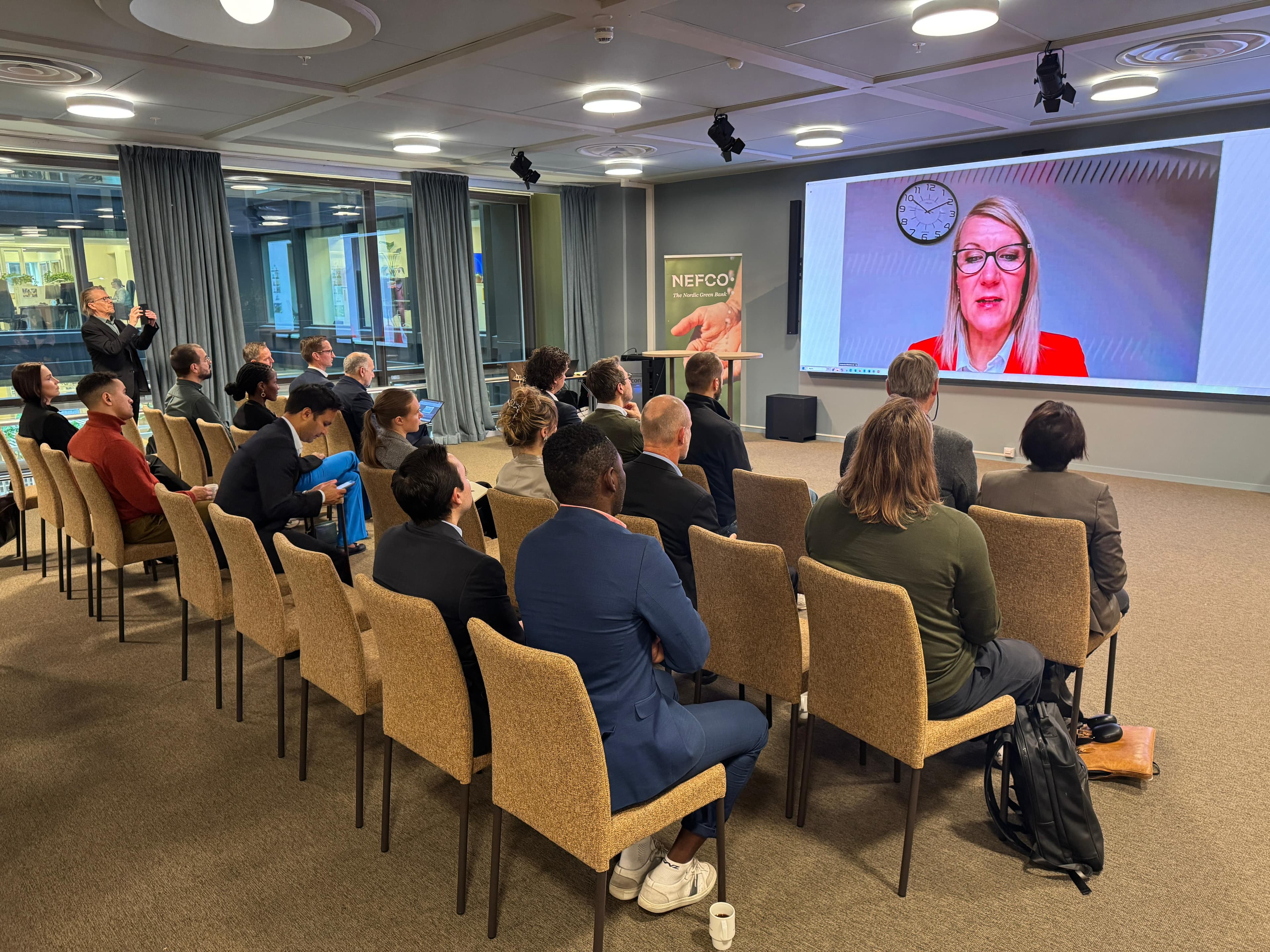CLC convened leading experts and member organizations to drive action on scaling carbon removals and building the necessary market mechanisms. Early action is essential to unlock opportunities despite uncertainty. For companies, securing early-stage financing is critical and often requires multiple funding sources. Long-term investor confidence is needed, and it depends on a strong public-private collaboration. In the coming years, a European market structure must integrate voluntary markets and the EU ETS, towards a compliance market, and start to consider how to solve the question of a dedicated removal market for post-2050 time. These developments, discussed at the event, will be further advanced through CLC’s carbon removals project in spring 2025.
The need for the scale up of carbon removals is urgent to reach net-zero emissions. CLC’s Development Director Juha Turkki reminded that on a global level, we would need 7-9 Gt annual removal capacity to reach climate neutrality, an amount equal to the current thermal coal market.
Dr. Malte Winkler from Perspectives Climate Group discussed the integration of carbon removal into the EU Emissions Trading System (ETS). In his presentation, he highlighted permanence and MRV-ability (Measurability, Reportability, and Verifiability) as key criteria when considering the eligibility of different solutions for ETS integration. Winkler also emphasized the need for a diverse mix of policy actions in the early stages of scaling, noting that there is no silver bullet.
Dr. Felix Schenuit from Stiftung Wissenschaft und Politik analyzed the structure of the mechanism required to achieve net negativity post-2050. Schenuit stressed that the mechanism should accelerate the scale-up of removals in the short term and enable the financing of net-negative emissions in the longer term. Schenuit noted that scaling up different technologies to make them marketable requires strategic timing of various policy actions. He presented a four-point policy roadmap, starting from ensuring credible certification for Carbon Dioxide Removal (CDR). The next phase of the roadmap involves gradually increasing obligations to increase carbon removal capacity, with the obligation eventually shifting from member states to polluters. The construction of capacity would be supported by a dedicated carbon removal fund to be established for this purpose.
Lauri Kujanpää, Team Leder at VTT examined the role of carbon-storing products and materials. Current regulations favour short-lived CCU products replacing fossil fuels, and Kujanpää emphasized that certain mineral products in particular have significant potential to store CO2 long-term. However, the crucial factor is the origin of the carbon dioxide; it should be of biogenic or atmospheric origin, and the product's life cycle needs to be carbon negative.
Anssi Kiviniemi, Head of Sustainability at SEB, highlighted that the demand for Carbon Dioxide Removal (CDR) in accordance with companies' net zero targets will far exceed the supply even in the medium term. To align these, the outlook for business opportunities must be strengthened. From a market perspective, this requires a stable political environment, transparency, and trust between market participants.
Johan Börje, Business Development at Stockholm Exergi, brought the perspective of a BECC (Bioenergy with Carbon Capture) operator into the discussion. Stockholm Exergi plans to build a large-scale BECCS (Bioenergy with Carbon Capture and Storage) facility, based on the existing flow of sustainable biomass feedstock. Once completed, the facility will capture 800 kt of CO2 per year, and while feeding the waste heat into the district heating network, it will put out the same amount of electricity and heat as before while providing the capturing. Stockholm Exergi has been awarded support in the Swedish Energy Agency’s latest reverse auction for BECCS organized at the end of 2024.
Börje emphasized the role of Voluntary Carbon Markets (VCM) in bringing in the funds needed to scale up the market. Without voluntary markets, there would be much less capital coming into the industry. When considering integration into the EU ETS he called for government aid and grants to help filling the funding gap (Levelized Cost of Carbon Dioxide Removal (LCOtCDR) minus Emissions Unit Allowance (EUA)). Regarding the compensation claims, he emphasized the need to guarantee the high integrity of the claims, but it should not lead to making it too difficult for companies to make voluntary compensation claims. He also emphasized that we should not ignore the 'Like-for-Like' principle.
Sanna Jokinen, Public Affairs Lead at ST1, also emphasized in her presentation that there is a need for a variety of market mechanisms for financing. As an example, she highlighted the Finnish Flexibility mechanism for the blending mandate solution. She also called for clearness and stability in the regulatory framework.
In addition to this seminar, CLC also hosted a webinar on this same topic for all CLC members.These events were part of the ongoing Carbon Removals and Storage –project, which seeks to propose a market mechanism for carbon sequestration and to consider how the role of various CCU (Carbon Capture and Utilization) solutions in climate policy could be strengthened. The European Commission brief creating the first EU-wide voluntary framework for certifying carbon removals, carbon farming and carbon storage in products across Europe was approved last year and the work to define more detailed certification methodologies is ongoing. CLC has been active in this process as part of the expert group. By 2026, the Commission will assess integrating CDR into the ETS and report findings to the European Parliament and Council.
CLC will working on these topics during spring, if you have any questions or comments please reach out to Juha Turkki, Development Director, Climate Leadership Coalition at juha.turkki@clc.fi

